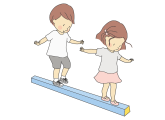What does it really look like when children direct their own learning? Katherine Cooling-Smith has some suggestions…
Encouraging children to lead their learning means they should be free to browse, select and move resources easily and independently. By displaying these in baskets and trays on the floor or on low shelving at child height, your children can easily identify and explore the things that really interest them.
I also recommend offering a large array of loose parts and open-ended resources, to support and encourage children’s unique creativity in their play. This is also a great way to nurture any schematic behaviours as they emerge.
Take the time to assess your setting with a child’s-eye view, paying close attention to anything that might potentially restrict or inhibit children’s natural play.
Ask yourself questions such as, does this closed door stop children from venturing outside? Is the floor soft enough for me to get down and play comfortably? Are there inviting quiet areas away from noise? Can children play outside without worrying about the weather or getting messy?
I recommend looking at The Communication Friendly Spaces Approach by Elizabeth Jarman to help you assess effectively with the child as your focus.
Knowing exactly what makes each child tick is the key to curating an environment where they can truly lead their play. The best way to do this is by working closely with your families and keeping a regular open dialogue to really understand what sparks their drive to explore and experiment.
Really getting to know who your children are away from the setting, helps to positively influence how you plan your curriculum around them as unique individuals.
I practice by the mantra ‘Be careful what you teach, it may interfere with what they are learning’ (Magda Gerber), and joyfully admit to throwing most of our old-school intense daily planning out of the window.
We all have our curriculums in place, but by swapping in a more relaxed pedagogy whereby planning emerges in the moment as the hours, days and weeks unfold, you put the child at the heart of everything whilst skilfully scaffolding and extending their learning around them.
Expressive art and design should be exactly that: the opportunity for children to express themselves creatively as they wish.
The key here is to tune into the mindset of a young child with the understanding that, more often than not, they relish in the overall experience of creating, but have little care for the final product.
When we discard our adult expectation of what the end result of their work should be, we give our children the liberty to express themselves freely in the moment - and in doing so, we unlock the true creativity of the child.
Katherine Cooling-Smith is an award-winning childminder.

Early Years development – How to support children
Editors picks

Why play is essential to early childhood development
Editors picks
